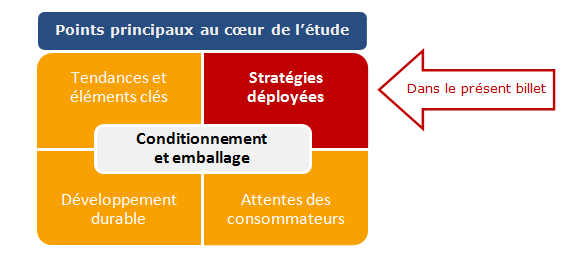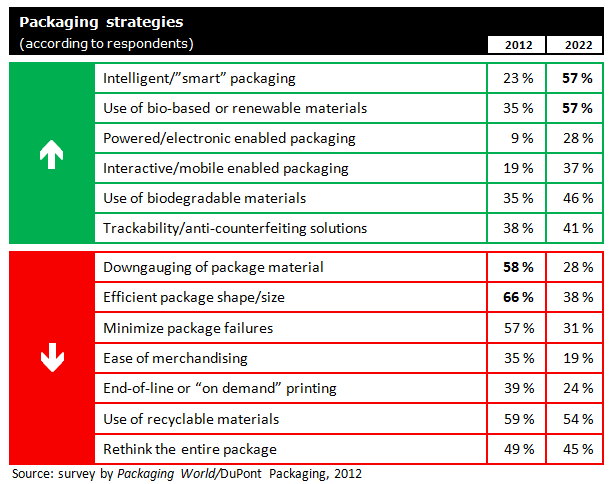The first three blog posts analyzing the results of a study conducted by Packaging World have demonstrated the the opinions of respondents concerning consumer expectations, sustainable development and trends in the packaging industry. Now all of these elements will be incorporated into more global solutions, which is the topic of the fourth and final blog post of this series.
The last in a series of four blog posts: Last August, Packaging World, in association with the company DuPont Packaging & Industrial Polymers, conducted a survey involving professionals from the packaging industry and other related sectors in order to learn about the current trends as well as those that could dominate the industry ten years from now. This blog series will highlight the key points of those results.
Even if the study was conducted on two different continents, the results were analysed and presented separately, thus facilitating the analysis of results from North America, IMS’s market.
The combination of renewable materials and intelligent solutions
When we consider the results to the preceding questions, it’s not surprising that 57 % of respondents will place the use of bio-based or renewable materials at the centre of their packaging strategy in 2022, which is an increase of 22 percentage points compared to today. The other strategy that stands out and that will be number one, tied for first in 2022, concerns smart packaging, which is found more in the food and pharmaceutical industries. If this strategy is used by only 23 % of respondents today, it will increase to 57 % in 10 years. This is an impressive leap although logical from a technological point of view.
On the other hand, other solutions will see a drop in popularity during the next decade. According to respondents, the downgauging of package material and efficient package shape and size will lose respectively 30 and 28 percentage points. The cause for this is relatively simple. Companies that currently work to reduce the volume of their packaging will not be able to reduce it indefinitely. In 10 years, we can expect them to reach the minimum, which is why companies will be using new strategies.
Back to the roots and technology: two poles that should cohabitate
Despite our obvious thirst for new technologies, electronic gadgets and interactive products, we are beginning to understand the urgency of the situation when it comes to preserving our planet and to the importance of developing sustainable solutions. It’s as if, blinded by the ultra-fast advances in technology, we had put aside our former values. In all, by combining environmentally-friendly materials and intelligent solutions, we will do nothing less than go back to the future!
However, I cannot help but highlight an apparent contradiction in these results. They announce a trend for materials with a lighter environmental footprint, but in a more global strategy axed toward the compatibility with mobile and interactive devices. However, as we already know, electronic waste is a serious threat for the environment. Let’s hope that telecommunications professionals point their strategies in the same direction as the packaging industry.








